English | Dutch |
|
| Expensive cars and scenic routes | |
Osijek (Croatia) to Shkodra (Albania), August 2014
|
|
| |
|
We are driving on the road from Szeged to Pecs in Hungary. The landscape is monotonous but there is enough to see. The highway has a top quality and each 500 metre it is spanned by a slick-looking crossover. The wide crossovers are built with safety staircases on the sides which are equipped with stainless steel arm railings. Those bridges aren't connecting other main roads; they only connect sandy paths from one side of the highway to the other. They have the noble purpose to enable farmers to easily drive to the other side of their land. A wonderful goal, but we wonder whether this luxurious solution was also built if the Hungarians had to finance it by themselves. We think that, at that time, the EU infrastructure budget was not finished yet! After a short stay in Hungary, we go to the former Yugoslavia. We visit the extremely friendly Croatian town of Osijek on our way to Bosnia Herzegovina. We visit the cities Tuzla and Banja Luka; names that are still etched in our memory, because of the Bosnian war. Except some bullet holes in the older buildings, at first glance you notice little of what has happened during the period from 1992 to 1995. People drink their coffee on a terrace and enjoy the summer. The most obvious relic of the war that you see in summer, are the number of former Bosnian refugees who now spend their summer vacations in their homeland. As we drove through Bosnia and Herzegovina in December 2013, we noticed the many old Volkswagen Golfs from the early 80s on the road. In summer, these cars pale into insignificance with the new Audis, BMWs and Mercedes with German, Austrian, Swedish, English or Dutch registration plates. A former refugee who now lives in Germany, confides that the culture here is much healthier than in Germany. “People want to enjoy themselves and value friendship higher than money.” We ask him whether it isn't difficult to live in Germany, after which he indicates that he couldn't get used to living in Bosnia Herzegovina anymore. "My brother, who lives in Bosnia Herzegovina, works night and day and earns only EUR 200 in a month." Then he gets in his BMW 5 series of a few years old, and we conclude that he has adapted to the German culture really well. When we leave Bosnia Herzegovina a few weeks later, we have mixed feelings about the future of the country. You taste the nationalism of the various population groups very clearly. This is reflected in innocent football shirts, but also with T-shirts of Ratko Mladic and with slogans on the walls with "Anti Dayton", which shows that the peace agreement is not ideal for everyone. (See more about Bosnia Herzegovina in this Article). |
|
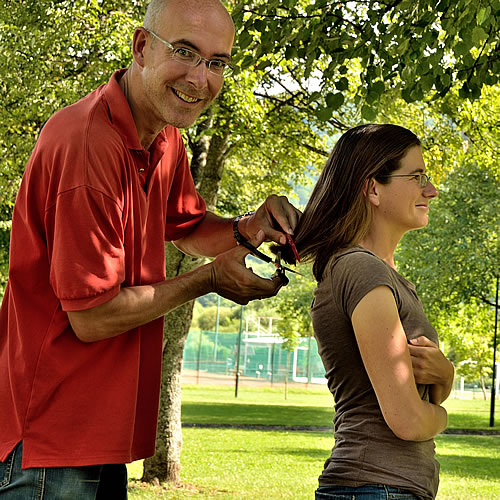 |
|
Edwin is Ivonne's personal hairdresser |
|
Montenegro is our next destination in the former Yugoslavia. Some call Montenegro the most beautiful country in Europe and it is indeed a wonderful travel destination. At the beginning of the year, we already visited Kotor Bay on the coast and the Lovcen National Park. Now, we explore Durmitor National Park, where we train our muscles during beautiful hikes. For the ones who like driving more than walking, this park is also very suitable. One of our favorite paved car routes in Europe, goes through this park. Every view is different and along large parts of the route there is no development. Truly a route engineered to be beautiful. It is the route from the Bosnian border at Granicni Prijelaz Scepan Polje, along the river Liva and the Pivsko Jezero Lake. Halfway the lake is a small winding road to the Durmitor National Park. In one word: awesome! (See the photo impression of Durmitor NP) From Durmitor National Park we drive through Biogradska Gora National Park to the town of Plav, which is located on a nice lake. The number of tourists is still low and people are friendly. From other 4x4 drivers we had heard that the nearby border crossing with Albania is open, so you can drive the spectacular road from Vermosh to Shkodra. Our travel book and several maps don't mention this border crossing, but by now we can tell you from our own experience that it is indeed open and that the route to Shkodra is undeniably spectacular. Even better news is that today only 30 kilometers are unpaved. (The piece just after the Montenegrin border) So a large part of this route is now reachable by normal car from Shkodra. The Albanians are still busy with construction projects, so probably the whole route to Plav will be accessible for motorcyclists and cars within a few years. |
|
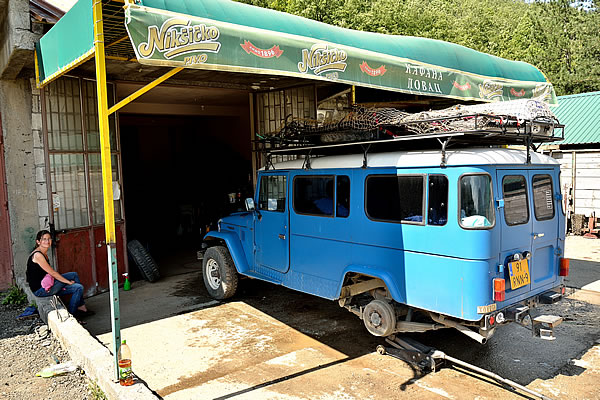 |
|
Flat tyre in Montenegro |
|
| In Shkodra we stay at a super luxury camping, in Albanian terms at least. A great place to work on the website and to plan our trip to Tehthi. Tehthi is a small village in the Albanian Alps. A notorious road of about 60 kilometers goes to this village, though the road has become much less notorious since it is largely paved. Only the last 15 kilometers is unpaved, although the largest rocks are removed to enable regular passenger cars to go to the village. On these 15 kilometers you descent on a narrow dirt road from 1500 meters to 740 meters. This is the part of the road which makes travel books tell you it is better not to drive yourself. We didn't find it a dangerous road, although you need to be comfortable in driving backwards on narrow, steep roads without crash barriers in case you encounter an oncoming vehicle. Again, the road will probably be paved completely within a few years making Tehthi more accessible to everyone. It is a nice area and Tehthi is a good base for hikes. There are plenty of accommodation options in the form of small boarding houses where you can stay on a full board basis. This is the place to fill your belly with organic vegetables and home-reared pigs transformed in juicy chops. For us, however, the highlight of Tehthi comes a few days later, when we drive back to Shkodra. We follow the long 4x4 route (81 kilometers of which 51 unpaved) and this is the real habitat of out Toyota. Seriously steep trails with lots of loose rocks where our speed is often not higher than 7 kilometers per hour. All these bumps are rewarded with lovely views; definitely worth the effort. See here the photo impression. The coming weeks, we still remain in lovely Albania, after which we will take the ferry crossing to Italy. Sicily has long been on our wish list, so we are very curious about what lies ahead. |
|
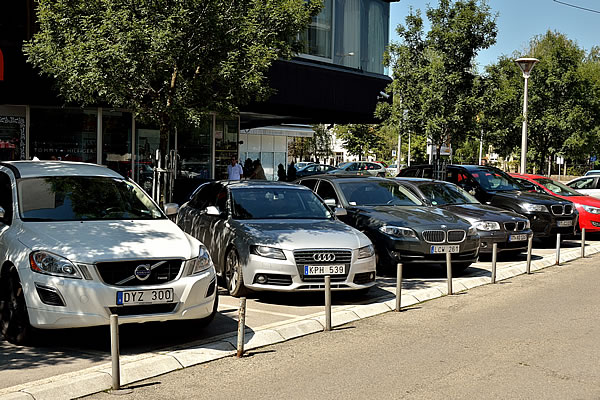 |
|
Expensive foreign-licensed cars owned by Bosnian Refugees in Banja Luka |
|
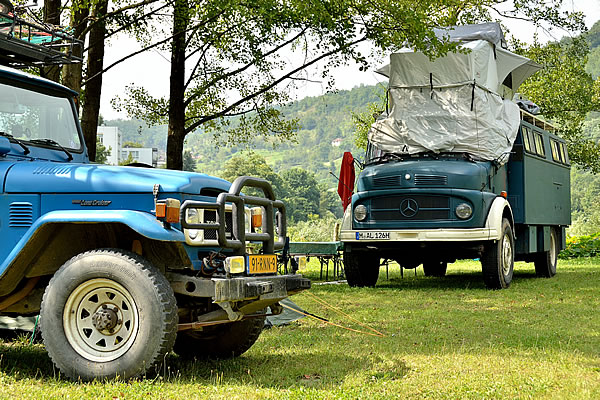 |
|
Our Toyota with an old but tough Mercedes Camper in Bosnia |
|
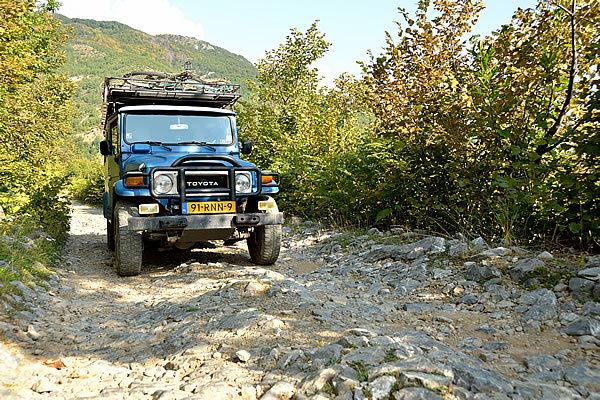 |
|
Tough roads in rural Albania |
|
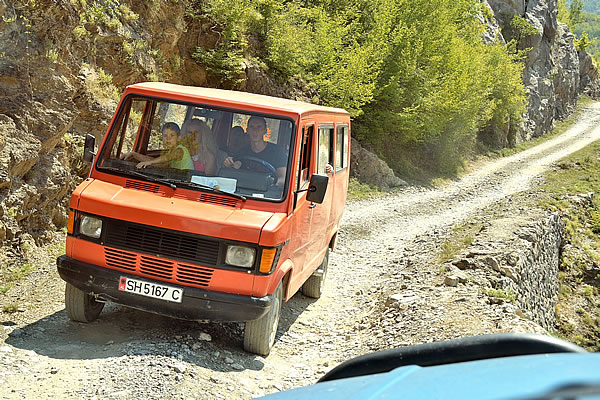 |
|
Ai, oncoming traffic |
|
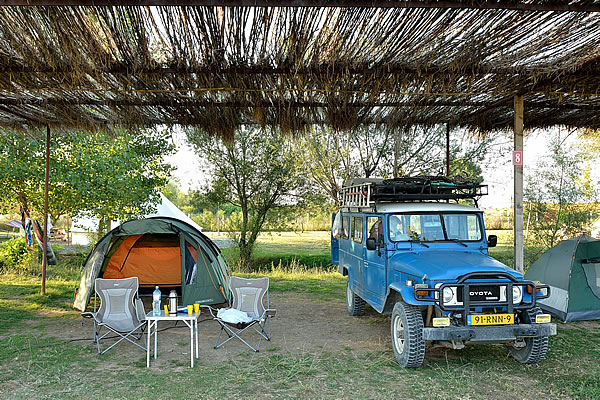 |
|
Our camp site in Shkodra (Albania) |
|
| <Previous weblog> | |